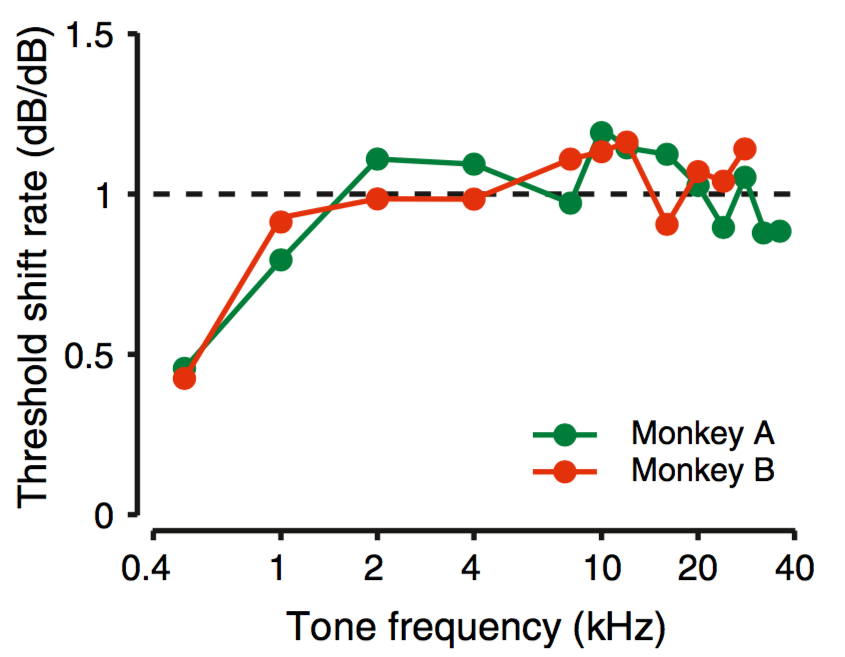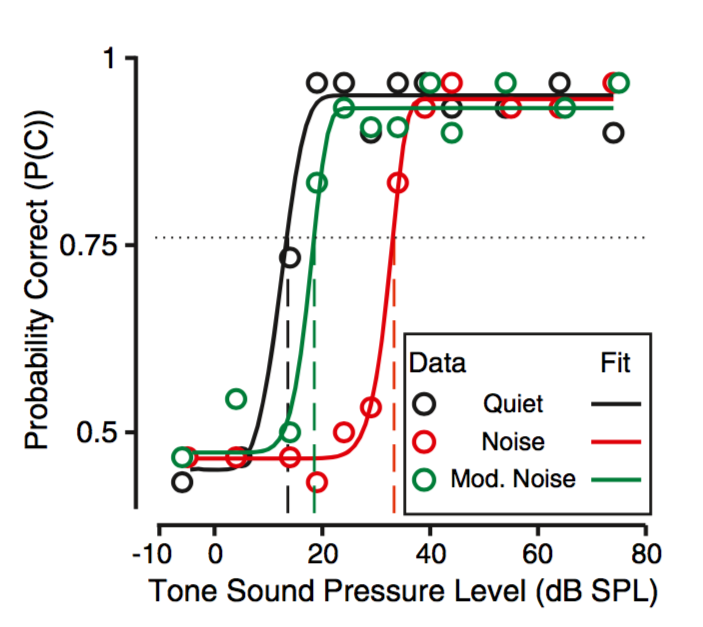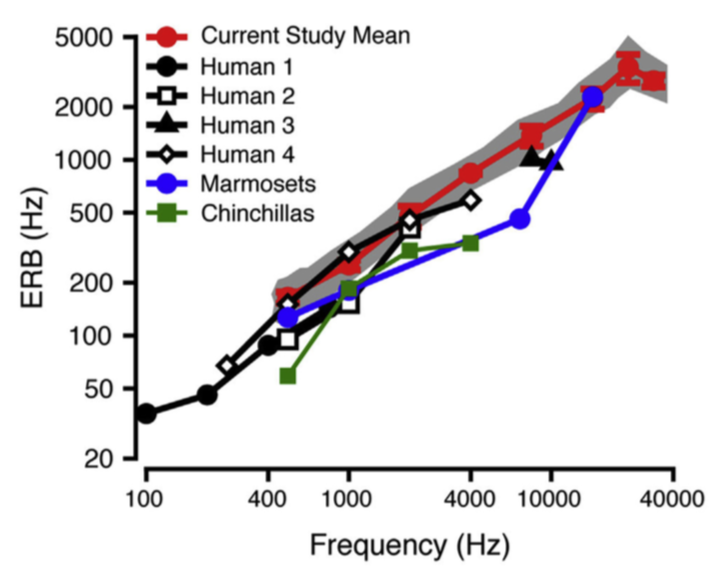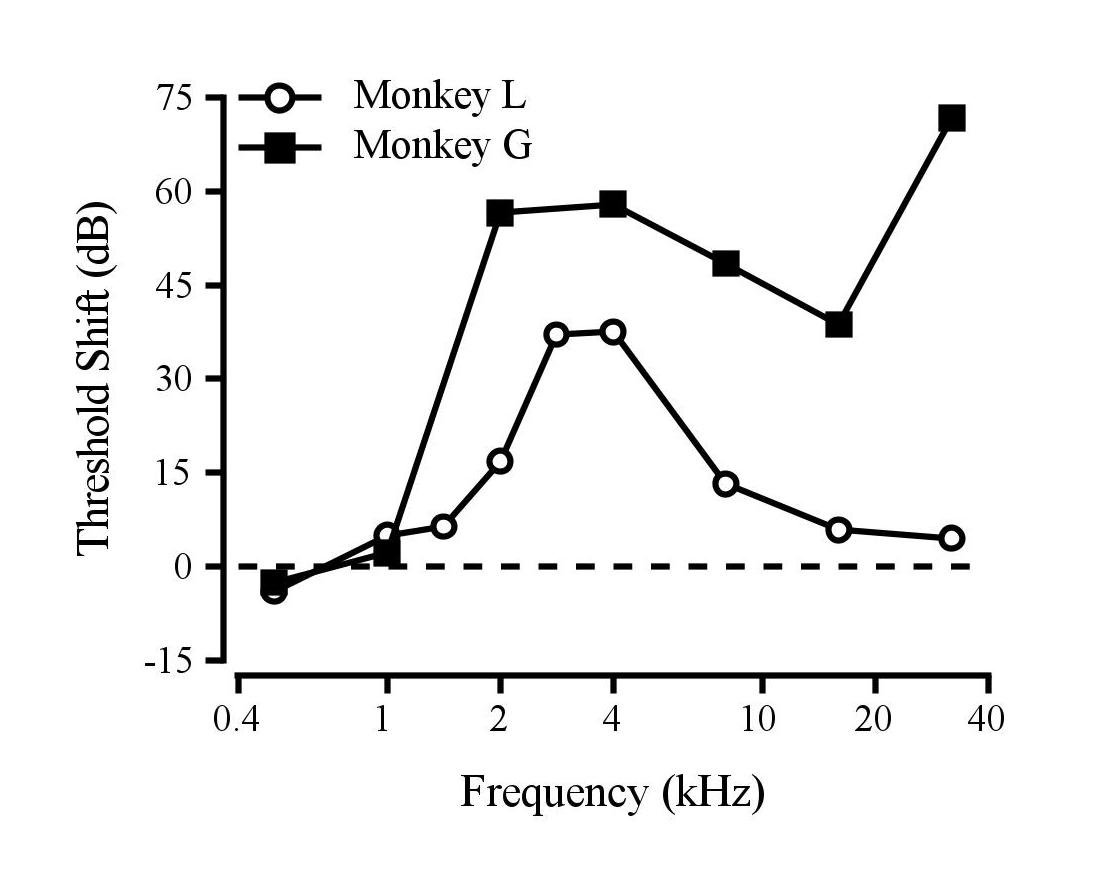Auditory Perception in Noisy Environments
The first aim of our research is to understand the biological basis of hearing in noisy environments. We are interested in how sounds are encoded in the brain by the activity of populations of neurons and how this activity may subserve auditory perception and behavior. To that end, we use an approach that combines behavior, electrophysiology, quantitative analysis and computational modeling.
Perception
Using nonhuman primates as a model, we investigate auditory perception through behavioral psychoacoustic tasks, such as detection of signals (i.e. tones, amplitude modulated tones, human communication sounds, etc.) in quiet and in noisy, naturalistic environments (i.e. background noise).
In particular, we are interested in characterizing the spectrotemporal aspects of auditory perception. We measure spectral and temporal resolution using a variety of standard psychoacoustic tasks, such as tone detection in amplitude modulated noise to measure temporal release from masking and tone detection in notched noise to measure frequency selectivity.
Physiology
We also examine the relationship between behavior and neural circuitry by simultaneously recording the activity of neurons in the auditory brainstem and midbrain during behavioral performance.
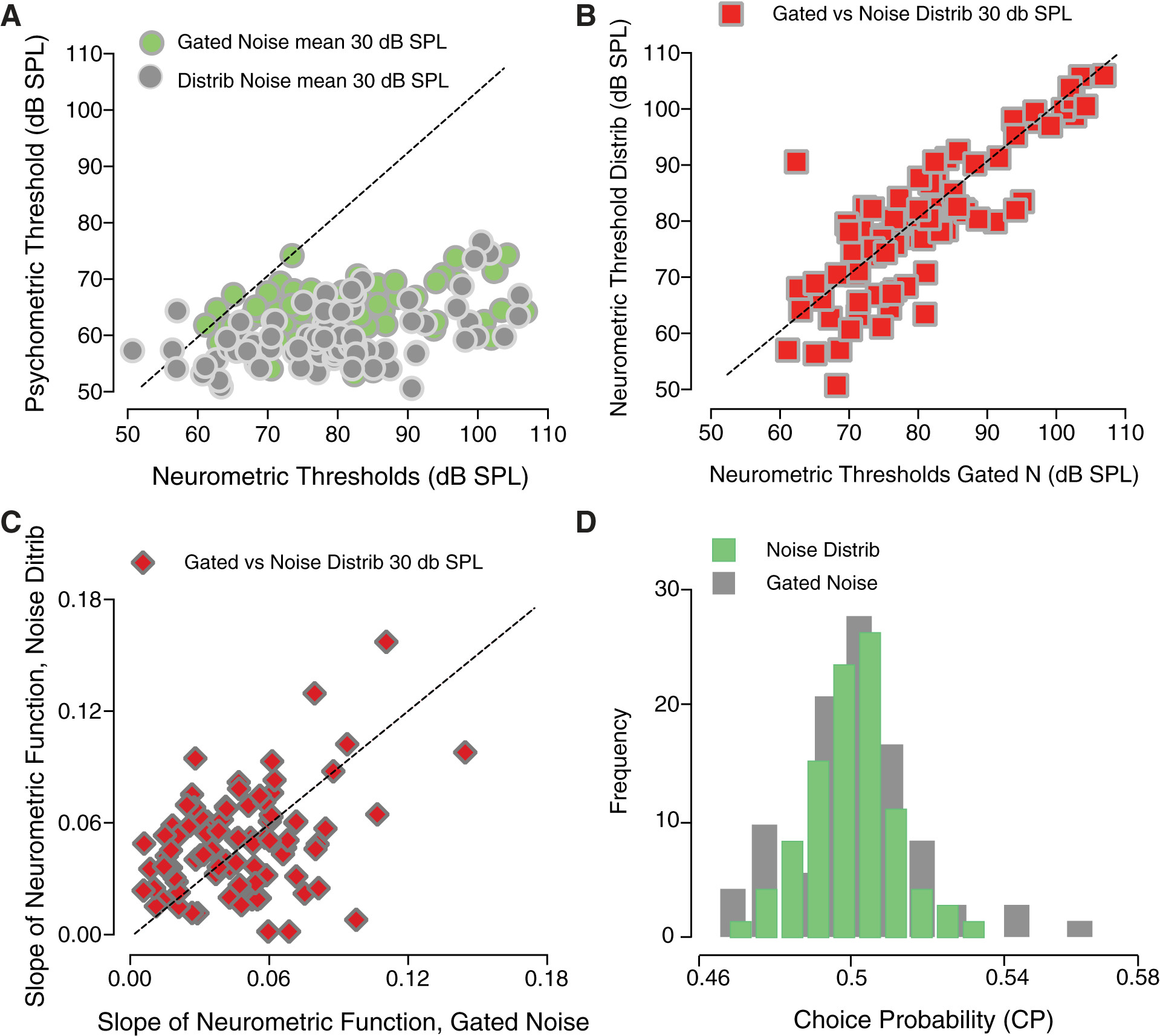
Neuronal adaptation to sound statistics in the inferior colliculus does not reduce the effectiveness of masking (Rocchi and Ramachandran, 2018.)
Consequences of Noise-Induced Hearing Loss
The second aim of our research is to understand the biological basis of noise-induced hearing loss.
Perception
We characterize the effects of noise-induced hearing loss on auditory perception.
Anatomy
Through collaborative efforts, we investigate changes in cochlear histology following noise-induced hearing loss using confocal microscopy and immunohistochemistry techniques.

Inner and outer hair cells at the 4kHz cochlear frequency place following noise-induced hearing loss (Valero et al. 2017)
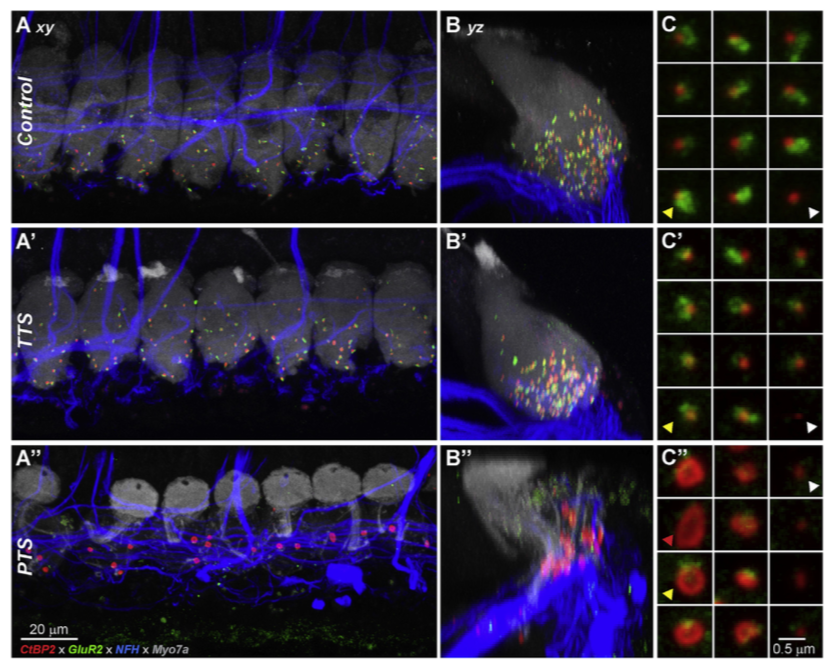
Inner hair cell presynaptic ribbons and auditory nerve fiber postsynaptic densities following noise-induced hearing loss (Valero et al. 2017)
Physiology
We also investigate changes to the auditory pathway using clinical electrophysiological measures, including auditory brainstem responses (ABRs), otoacoustic emissions (OAEs), and middle ear muscle reflexes (MEMRs).
The long-term goal of the lab is to apply our findings to the development of improved assistive hearing technologies. Research in the lab is supported by the National Institutes of Health (NIDCD).


